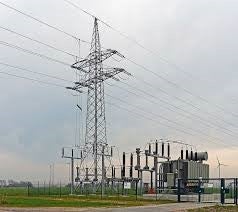With beneficial electrification plans, the Illinois Commerce Commission takes a step towards reducing harmful emissions
 By Larissa Koehler and Brian Urbaszewski
By Larissa Koehler and Brian Urbaszewski
Today, the Illinois Commerce Commission issued a final order approving beneficial electrification plans from the state’s two biggest utilities — Commonwealth Edison and Ameren. The transportation-focused plans, directed by the Climate and Equitable Jobs Act, are critical to decarbonizing the transportation sector in Illinois.
With greenhouse gas emissions from all transportation at approximately 32% of total state emissions, and medium- and heavy-duty vehicles responsible for 59% of particulate matter and 67% of nitrogen oxides from on-road vehicles, Illinois is no stranger to harmful air pollution. The air quality impact of on-road vehicles is also significant. Chicago, for example, ranked 16th nationally for high ozone days and 15th for particle pollution. A recent analysis by the Union of Concerned Scientists demonstrated these air quality impacts are not evenly felt.
People of color are exposed to a disproportionate amount of particulate matter, including from trucks and buses. Asian Americans, African Americans and Latinos are exposed to 32%, 21%, and 19% more fine particulate matter respectively than whites throughout Illinois. Addressing these disproportionate impacts by implementing equitable policies is a must, and prioritizing electric vehicle charging infrastructure necessary to support zero-emission vehicles and deployment of these cars, trucks and buses would make the biggest impact in pollution-burdened communities.
With beneficial electrification plans, the ICC takes a step towards reducing harmful emissions Share on XWhat are Beneficial Electrification Plans?
Both ComEd and Ameren filed their BE Plans with the Illinois Commerce Commission— the agency that governs utilities in the state — in July, after a lengthy stakeholder workshop process. As part of the Clean Jobs Coalition Parties, which includes Sierra Club, the Natural Resources Defense Council, Respiratory Health Association and the Little Village Environmental Justice Organization, EDF participated in advocating for BE Plans that are effective, equitable and maximize health and environmental benefits:
- Equity should be front and center. The Climate and Equitable Jobs Act does many things, and thanks to the work of many committed stakeholders, equity is a thread that runs throughout the law. This is no less true of the expectation for BE Plans, which require the utilities to dedicate at a significant percentage of funds in environmental justice and Restore, Reinvest, and Renew As detailed in our advocacy, those percentage requirements are a base — utilities can and should go further. Communities and environmental justice organizations should be an integral part of the implementation of these BE Plans and future iterations of these plans.
- It’s all about grid integration. For BE Plans to result in the maximum benefit to all ratepayers, vehicle-grid integration is crucial. Vehicles must be integrated with the grid in a way that capitalizes on their storage capabilities, and rates must be structured to incentivize vehicle charging at times when demand is lower and/or there is more renewable energy availability (aka, managed charging). Vehicle-grid integration will only be effective with strategies that include a suite of rates that incentivizes strategic charging of electric vehicles, education for individuals and businesses interested in electric vehicles, further focus on the ability of vehicles appropriate and feasible ( bidirectional charging) and placing distributed energy resources like on-site solar and stationary battery storage alongside charging stations to manage energy demand. By improving vehicle-grid integration, the need for grid build-out can be mitigated to some extent, which will be good for all ratepayers.
- Information is power. For the state to successfully transition to zero-emission vehicles across all sectors, more targeted information must be provided. Utilities can play a proactive role in providing information and technical assistance to fleets and residents. The utilities must also detail the benefits of zero-emission vehicles, along with the available means of making them more affordable, including financial incentives within the BE Plans.
Of course, these BE Plans are just one part of a suite of complementary policies that are needed to decarbonize the Illinois transportation sector while quickly improving health outcomes in environmental justice communities. Other federal and state actions will be necessary to transition the truck and bus sector in a sustainable, cost-effective and equitable way.
For example, policies that expand charging stations to support the growing number of zero-emission vehicles, with a focus on remedying inequities in the distribution of transportation pollution. This includes effective electric rate design and adoption of more protective California vehicle standards like the Advanced Clean Truck and Heavy-duty Omnibus rules, which will provide the clear market signals needed for the transition. In addition, state level policies, like rebates for light-duty vehicles and charging stations will need to be continuously and meaningfully funded, as well as implemented in an equitable way.
Illinois, aside from being a literal crossroads for freight traffic, is also facing a metaphorical crossroads on how it will protect communities. Now is the time to capitalize on the initiative the state has shown in decarbonizing light-duty vehicles with CEJA by focusing in on dramatically reducing emissions from trucks and buses — or risk falling behind many other states, like New York and New Jersey, which have already implemented vehicle policies to transition larger vehicles. Further progress will be good for Illinoisans, the environment and the economy — the ultimate win-win-win.
Brian Urbaszewski is Director of Environmental Health at Respiratory Health Association










